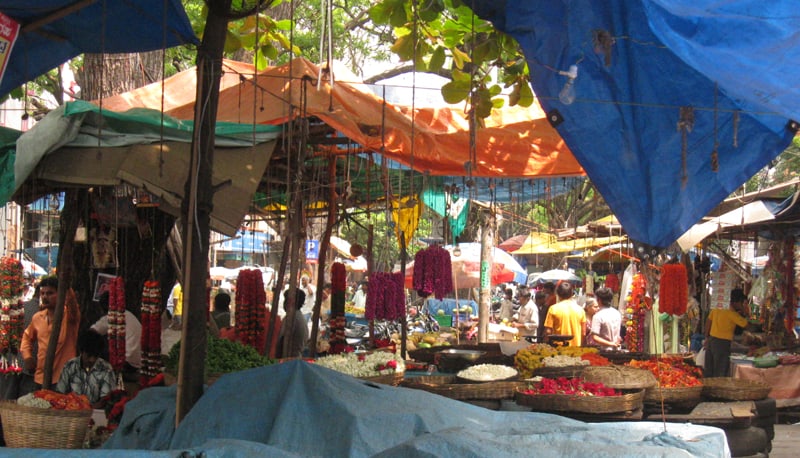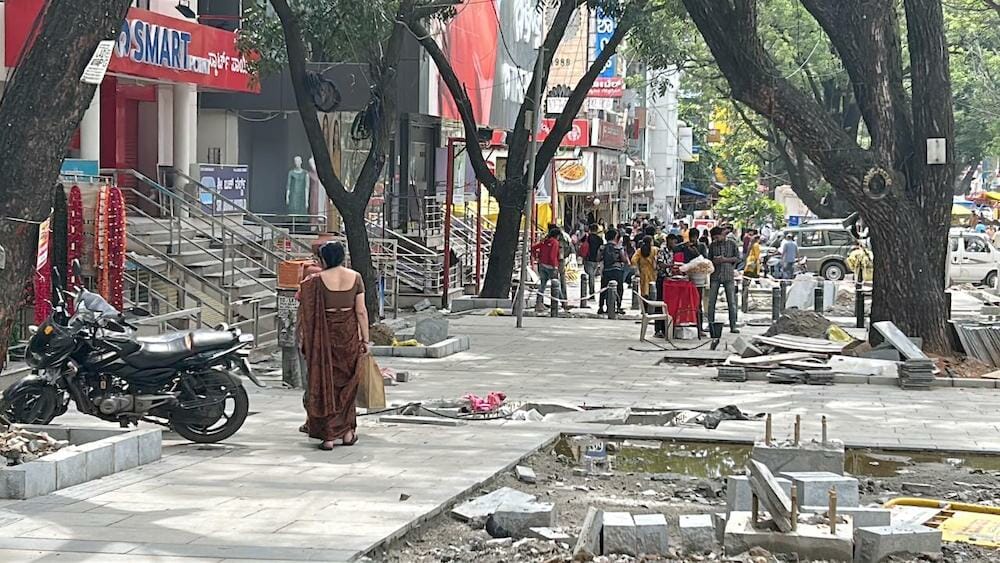“If you plan cities for cars and traffic, you get cars and traffic. If you plan for people and places, you get people and places.” This saying by urbanist Fred Kent holds true for Bengaluru in general, and Gandhi Bazaar in particular.
Reminiscing the bygone days
As Bengaluru grew into a burgeoning metropolis, due to unbridled urbanisation, it became congested. Haphazard, illegal construction and influx of migrants led to neighbourhood walkability being significantly reduced. This was seen in Gandhi Bazaar, one of the oldest parts of the city. Residents in and around Basavanagudi/Gandhi Bazaar area used to walk to the nearby market to purchase their daily necessities and strike friendly conversations with people. Shopping was a social activity. Old residents of Basavanagudi, many of whom were well-accomplished, led a contented life.

Read more: Addressing communication and cultural gaps in the revamp of Gandhi Bazaar
Why revamping Gandhi Bazaar is required
As the number of vehicles grew and the apathy of civic authorities intensified over the years, areas in and around Gandhi Bazaar lost its original charm. People felt that they could no longer walk on the street without endangering life and limb. The senior citizens/ residents stopped visiting the market as they could not access the marketplace due to haphazard parking and footpath encroachment.
Many alternative shopping locations came up to satisfy the needs of people. The vendors and shop owners of Gandhi Bazaar are now facing a bleak future as people have discovered other options, such as online shopping, quick commerce, and other conveniently located shops, to purchase their daily necessities.
In order to attract people back to Gandhi Bazaar and make it a vibrant shopping hub, one has to look back to assess what went wrong and do course correction.
The footpaths need to be restored and haphazard parking eliminated. Also, it is only fair to give back to people what actually belonged to them by making the marketplace a pleasant shopping experience through improved walkability.
The ongoing development work in Gandhi Bazaar, by the BBMP in collaboration with Directorate of Urban Land Transport (DULT), is a response to this aspiration of the long-time residents of Basavanagudi. The efforts to upgrade utilities, such as electricity, water supply, sewage and OFC systems, by placing them underground makes the market area safe, reduces visual clutter, and leaves more room for walking.
The efforts to define the carriageway for the movement of two-way traffic (including buses), to reorganise haphazard parking to selected locations with metered parking facilities, and to provide pick-up / drop-offs / loading bays at intervals, will make the street more organised.

Read more: White topping work enforces a lockdown worse than pandemic times
Putting aside differences
Since residents and shoppers are looking forward to experiencing an enhanced walking environment in the Gandhi Bazaar market area, won’t the shop owners and street vendors also benefit? Won’t the surge of shoppers boost their business? The improvements to walkability will make Gandhi Bazaar market an important shopping destination – just as it was before, and the intangible associations between people and the market place will be reinforced.
The conflicting views of various groups, asking for increased vehicular space, restricting livelihood opportunities for market vendors, and protesting about heritage being spoiled, is uncalled for. The real culture of Gandhi Bazaar was to walk peacefully and shop for daily necessities.
Most shops or buildings on Gandhi Bazaar main road have flouted building regulations and do not have basement parking for their customers/visitors. Now, they are pressuring DULT and civic authorities to maintain the status quo i.e. maintain road width as before to continue with their business, hiding their mistakes, in the name of preserving heritage. If the merchants of Gandhi Bazaar can put aside their vested interests and join hands to become stewards of the newly-designed Gandhi Bazaar marketplace, everyone will benefit. We have a responsibility towards making and sustaining Gandhi Bazaar as a place for people.
(With inputs from other anonymous residents of Basavanagudi)
Super article from Vinayak Shandilya that sums up the fact that the current plans are perfect to recover the lost heritage. Vested interests must not be allowed to roll the plan back to the dirty, smelly, noisy, unwalkable nightmare that the Gandhi Bazaar of my childhood had become. I fully support the author’s views. I have seen the area deteriorate from heaven in the 1960s to hell in the 2000s. My family have veen resident in the area since the 1920s, over 100 years and I know something about its true car-free pedestrian heritage.